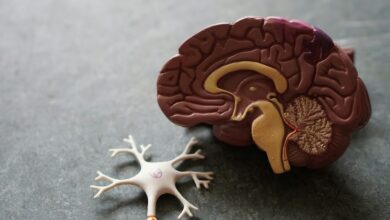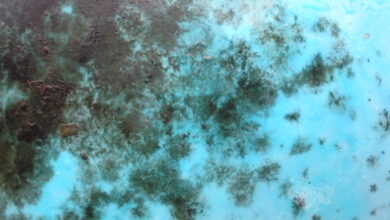Which is the Best Internal Bleeding Hemorrhoid Treatment?

Hemorrhoid is one of the most common gastrointestinal issues, but it is never a pleasant topic to discuss or think about. As per the NIH (the National Institute of Health), every 1 individual in 20 people will experience bleeding hemorrhoid at least once in their lifetime. This condition is fairly common and temporary and thus, does not cause much of a problem to some. However, some might experience severe conditions including rectal bleeding.
In such cases, it is important to consider a proactive approach to treating it. There are various ways of treating hemorrhoids. However, deciding the best internal bleeding hemorrhoid treatment will depend on the severity of the condition. How long hemorrhoid has been bleeding is also another determining factor.
Difference between Internal and External Hemorrhoid
Internal hemorrhoids are much more painful than external hemorrhoids. They are usually not visible to the eye as it occurs inside the body. One of the most common symptoms of internal hemorrhoids is rectal bleeding. You will notice the blood in the toilet bowl or the toilet paper. It is usually bright red in color.
External hemorrhoids sometimes cause the formation of lumps and are easily noticeable. Anal itchiness, pain, etc are some of the symptoms that you will notice in the case of external hemorrhoids. Thrombosed hemorrhoids usually begin as normal hemorrhoids. But they tend to cause a sharp increase in pain and major discomfort while sitting. They are easily noticeable. If it bleeds then the color of the blood will be darker in comparison to that of internal hemorrhoids.
Why Does Bleeding Occur in Hemorrhoids?
Whether hemorrhoid you have is external, internal, or thrombosed, all of them have one common symptom and that is bleeding. There are various reasons that can cause hemorrhoids to bleed. However, one of the common causes is straining during bowel movements. The straining will increase if the hemorrhoid is inflamed or swollen. This often damages the surface of hemorrhoid causing it to bleed. Constipation, stools that are dry and hard can also cause bleeding. In the case of thrombosed hemorrhoids, there are chances of bursting due to the pressure of pooling blood and causing bleeding.
Bleeding Hemorrhoids Treatment
There is a possibility of causing damage to the swollen tissue as a result of aggressive wiping or straining. This leads the hemorrhoids to bleed. Such bleeding is treated like any other hemorrhoid. However, if the condition of the hemorrhoid is severe and highly inflamed then it cannot be treated like the other hemorrhoids. There are various treatment options available. Following are some of the most common DIY treatments that you can do at home to manage the symptoms:
- Epsom Salt sitz bath
- Instead of using dry toilet paper, use moist towelettes
- Using an ice pack can help in easing the discomfort
- Drink lots of water
- Include high-fiber foods in your diet
- Workout to lessen the chances of constipation
- Use of stool softeners and suppositories
- Use over-the-counter medications
Medical Treatment Options for Hemorrhoid
There are various types of hemorrhoids. Some might go away with at-home treatments. But some might require medical attention and a more extensive treatment procedure. Hemorrhoids that cause excruciating pain, considerable bleeding, or thrombosed hemorrhoids require medical attention. If your hemorrhoid manifests such symptoms then it is best to consult a gastroenterologist. Following are some of the treatment options that help in treating hemorrhoids:
Rubber Band Ligation
One of the most effective treatment methods is rubber band ligation. Also known as hemorrhoid banding ligation, this process uses a small elastic band that is put around the base of the swollen vein cluster. The purpose is to cut off the blood supply to the affected area. This will wither hemorrhoid and will fall off on its own in about a week or so.
Sclerotherapy
This procedure uses a medical solution to achieve an effect similar to that of the hemorrhoid banding ligation procedure. The doctor will inject the solution into the hemorrhoid tissue to make the vein walls collapse. This will make the hemorrhoid shrink. It takes around 7-10 days for hemorrhoids to fall off.
Coagulation Therapy
This procedure uses infrared light for treating hemorrhoids. Coagulation therapy is effective in the treatment of internal hemorrhoids. The heat from the infrared light leads to the formation of scar tissue that causes destruction to hemorrhoids. The drawback of this procedure is that it can treat only one hemorrhoid at a time. Also, the procedure has to repeat every 10-15 days.
Hemorrhoidectomy
If the above treatment methods fail to get rid of hemorrhoids then the doctor might recommend surgical intervention. Hemorrhoidectomy is one such surgical procedure that helps in the removal of those hemorrhoids that are complicated, severe, and large.
Hemorrhoidopexy
Hemrrhoidopexy is also a surgical procedure that involves the use of staples to treat hemorrhoids. This procedure hastens the recovery period and is less painful as it does not remove hemorrhoids in totality.
Lastly, hemorrhoids are not always risky and mild cases are nothing to be concerned about. But those conditions that induce excessive pain and major discomfort require medical intervention. So it is best to consult a doctor at the earliest as it can cause major disruption to your day-to-day life.
Apart from this if you are interested to know about How Obesity Affects Heart Health then visit our Health category.


